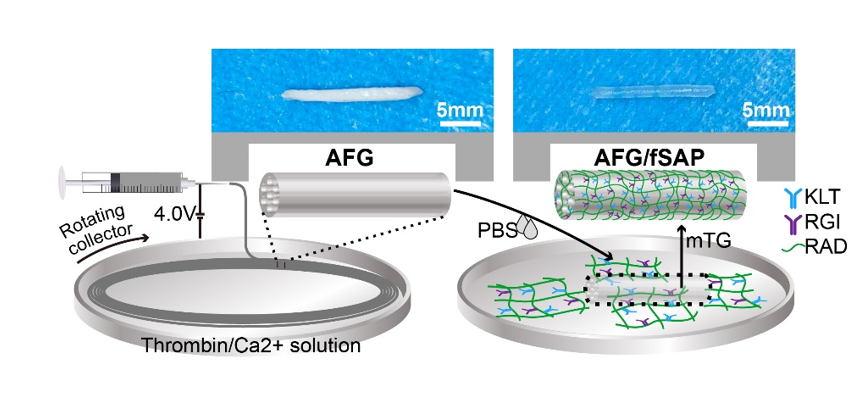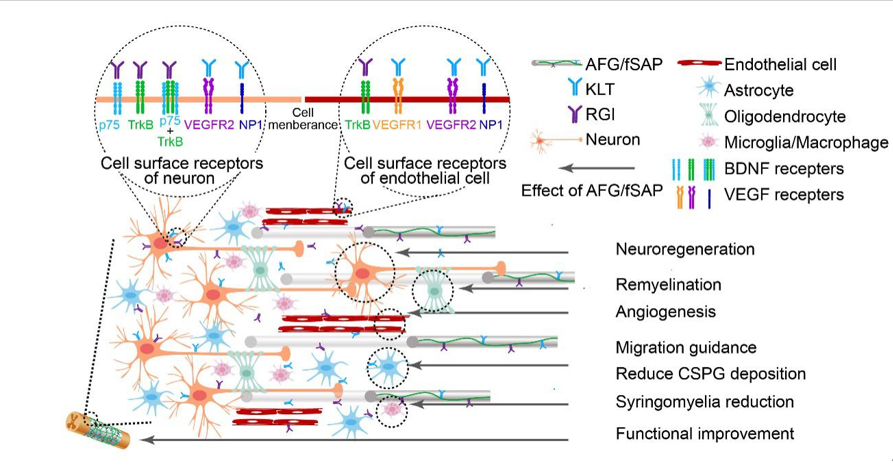A new implantable functional hydrogel for spinal cord injury rehabilitation has been developed by intercollegiate collaborative teams from Tsinghua University, led by Prof. Guihuai Wang of Neurosurgery at Beijing Tsinghua Changgung Hospital and Prof. Xiumei Wang at the School of Materials Science and Engineering of Tsinghua University. Animal studies have shown that the hydrogel promoted structural remodeling and function recovery for spinal cord injury, and implied a new strategy for spinal cord injury treatment.
Spinal cord injury can be caused by trauma, infections or tumors, and is always accompanied by a series of complications with high morbidity or mortality, which is a major challenge for neurosurgery practitioners. In recent years, the development of tissue engineering-based therapies has provided new strategies for spinal cord injury treatment.
Prof. Guihuai Wang's team and Prof. Xiumei Wang's team have collaborated intimately through multidisciplinary methods to develop a novel multifunctional nanofiber composite hydrogel with hierarchically aligned fibrin hydrogel/functionalized self-assembling peptides (AFG/fSAP). The hydrogel was made of non-toxic and absorbable fibrin and peptide. The nanofibrin as well as the self-assembled peptide which could promote axonal regrowth and angiogenesis were fabricated through liquid reception electrospinning technique to form the interpenetrating network structure.

Diagram of AFG/fSAP synthesis process
AFG/fSAP can simultaneously provide physical support, directional guidance, neurotrophic and angiogenic regulatory signals to the injured neural tissue. It can also promote tissue regeneration and motor function recovery through regulating the behavior of neurons, glial cells, vascular endothelial cells and other cells within the injury site after implantation into the injury site of a rat’s spinal cord.

Schematic diagram of the effect of AFG/fSAP on spinal cord repair
This work entitled “A multi-modal delivery strategy for spinal cord regeneration using a composite hydrogel presenting biophysical and biochemical cues synergistically” was published in Biomaterials, a leading international journal in the field of biomaterials. Dr. Wei-Tao Man, a neurosurgery resident at Beijing Tsinghua Changgung Hospital, is the first author, and Ms Shuhui Yang, a PhD student at the School of Materials and Engineering is the second author of this work. Profs. Guihuai Wang and Xiumei Wang are co-corresponding authors.
Editor: Li Han

